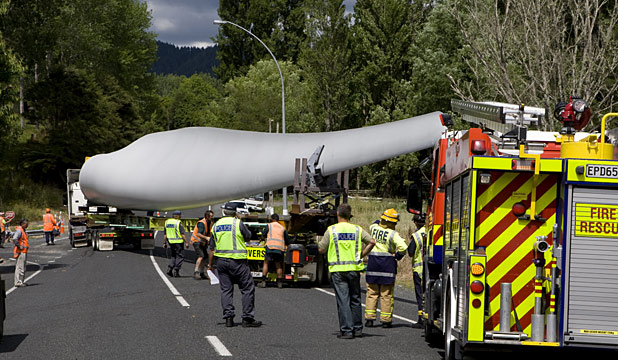One of the first point that I try to spot when I receive an offer for a wind farm is an unusual dispersion in prices among subcontractors.
Usually, it means that there has been a misunderstanding regarding the actual scope of works.
Several items have usually very stable, predictable prices. This is the case for instance with the main transformer, which usually will have a similar price between the various offers (unless someone is proposing a Chinese transformer assembled in North Korea, or something similar).
However, other prices may vary wildly. In my opinion, the most unpredictable item is “the works included in the Road Survey”.
If you are reading this post you probably know what a Road Survey (or Route Survey) is.
Basically, it’s a document explaining how the various wind turbine components will reach the wind farm area. Depending on several factors the logistic can be very easy or extremely complicated.
For instance, it’s not strange for a project to use 2 different harbours, maybe one for the blades and another for towers and nacelles.
Also, the road from the harbour to the project area can be flat and easy or full of bends and critical points where works are necessary.
All this point are normally discussed in the road survey. If you are working at a wind farm development, you should have a similar study. Otherwise, you could discover at a later stage that there is a critical point somewhere in the access roads.
The most critical points are usually houses and land plots with owners reluctant to concede right of way, but you can find a lot of obstacles on your ways (e.g. overhead lines, rivers, huge earthworks, etc.).
So, what is the problem with Road Survey?
Basically, it’s a non-standard document. Each company is doing it in its own way. It can be redacted by a transport company or by some external consultancy more or less experienced in wind farm.
The result is usually similar – something that it’s very difficult to understand and to quote for the company that is going to do the works in the real word.
Often your only alternative will be to ask for a lump sum quote, making comparisons and considerations about price fairness of different bids impossible.
Also, it could be difficult even for someone knowledgeable about the business to understand what is really necessary. Is the necessary “bend widening” a quick, 10m3 work or is it an extensive (and expensive) intervention?
Sometimes you have some kind of control on this document, for instance if you are requesting (and paying) it.
If this is the case, you should be sure that some key points are included in the report:
- UTM coordinates of the points where works are necessary
- Pictures of the area (including orientation of the photo – looking North, East, etc)
- Exhaustive work description, with at least a tentative bill of quantities (m3 of cut/fill, number of trees to cut, meters of New Jersey barrier to remove, etc.)
A good job would also include some kind of topography, but this is probably asking too much.

Leave a Reply